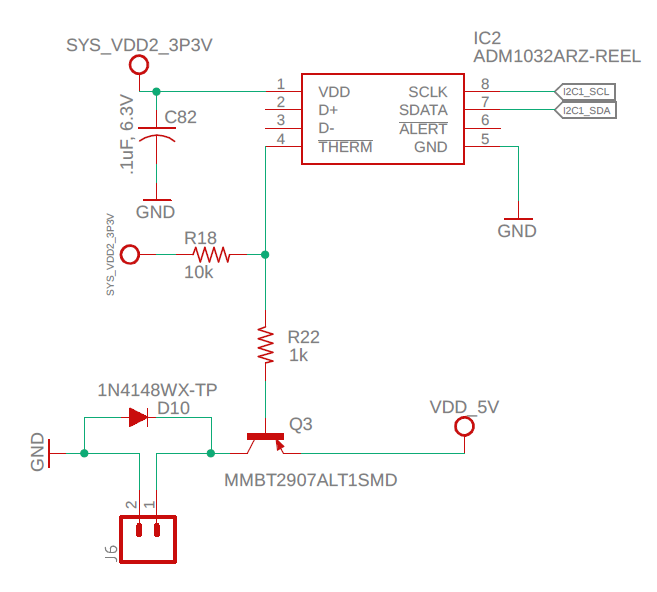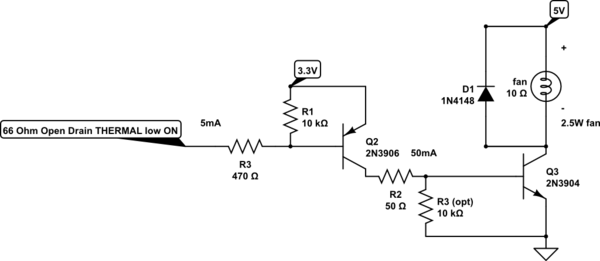Goal:
I am attempting to only turn on the fan when the THERM signal of the temp IC (IC2 in schematic) goes LOW. The IC works in that it triggers an active low on THERM when a temp threshold is crossed (40degC in our case)
Issue:
The fan is on at the beginning even before the active low is triggered (5V still passing through emitter to collector).
The active low does little to the base voltage (I measured over 4V at the base even though I verified almost zero at THERM) I chose a PNP BJT because I thought ON would be triggered from a low signal and OFF when high..but this doesn't seem to be the case. Does it have something to do with my Vb < Ve at the beginning? (3.3 at base through pull up resistor vs 5 at emitter?)
Could someone possibly recommend a transistor that might work in this application? Thanks so much!



